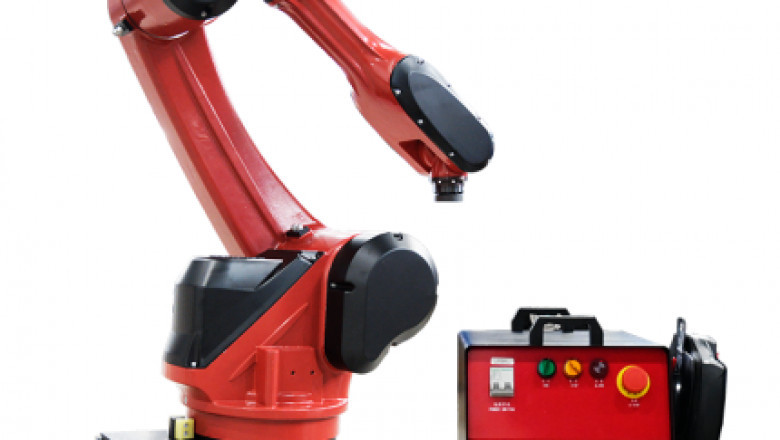views
Industrial robotics is rapidly transforming manufacturing across the globe. As technology advances, robots are becoming more intelligent, versatile, and capable of performing complex tasks, opening up new possibilities for industries ranging from automotive to electronics and even healthcare. The future of Industrial Robotics is not just about automation; it’s about creating smarter, more efficient, and adaptable systems that can revolutionize the way we work.
Key Innovations in Industrial Robotics
-
AI and Machine Learning Integration: Artificial Intelligence (AI) is one of the most transformative elements in industrial robotics. AI allows robots to learn from their environment and experiences, improving their decision-making capabilities. With machine learning algorithms, robots can adapt to new tasks without requiring extensive reprogramming. This flexibility means that manufacturers can use the same robot to perform a wide range of tasks, from assembly to quality inspection, making them more cost-effective.
-
Collaborative Robots (Cobots): Collaborative robots, or cobots, are designed to work alongside human operators, offering a higher level of safety and interaction. Unlike traditional robots that operate in isolation, cobots are built with advanced sensors and safety mechanisms that allow them to function in close proximity to humans. This synergy enhances productivity by enabling workers and robots to work together seamlessly, improving the efficiency of production lines.
-
Robotics in Healthcare: The application of robotics in healthcare is a promising frontier. Robots are increasingly being used for precision surgeries, patient care, and logistics in hospitals. Surgical robots, like the Da Vinci Surgical System, allow for minimally invasive procedures with greater precision and reduced recovery times. Additionally, robots are being deployed for tasks such as sterilizing equipment and delivering medications, contributing to more efficient healthcare systems.
-
Autonomous Mobile Robots (AMRs): Autonomous Mobile Robots (AMRs) are changing the way warehouses and distribution centers operate. These robots are designed to move goods from one place to another without human intervention. Equipped with advanced sensors, cameras, and AI, AMRs can navigate complex environments, avoid obstacles, and deliver goods to their destinations with accuracy. As e-commerce continues to grow, AMRs will play a critical role in improving supply chain efficiency.
-
Industry 4.0 and Robotics: Industry 4.0 refers to the integration of digital technologies such as IoT, AI, and big data into manufacturing processes. Industrial robots are a core component of this revolution, as they are increasingly connected to other machines and systems within the factory. This connectivity enables real-time data analysis, predictive maintenance, and improved production scheduling, resulting in a more efficient and optimized production environment.
Trends to Watch in the Future of Industrial Robotics
-
Increased Flexibility and Adaptability: As manufacturing demands become more dynamic, robots will need to become more adaptable to changing environments. The future of industrial robotics will focus on creating robots that can easily reprogram themselves and adjust to different tasks. This flexibility will be crucial for industries that require mass customization and frequent changes in production lines.
-
Robots as Service Providers: Robots are moving beyond the factory floor and into service-oriented industries. In the future, we can expect robots to take on roles in sectors such as logistics, hospitality, and retail. For example, robots may handle tasks like delivery, customer assistance, or inventory management, streamlining operations and enhancing customer experiences.
-
Improved Human-Robot Interaction: As robots become more integrated into everyday tasks, the way humans interact with them will evolve. Future industrial robots will feature more intuitive interfaces, such as voice commands, touchscreens, or even brain-machine interfaces. These improvements will make robots more user-friendly and accessible, even for those with little technical expertise.
-
Sustainability and Energy Efficiency: Sustainability is a major concern for industries worldwide. As environmental regulations become stricter, the future of robotics will focus on energy-efficient and environmentally friendly designs. Robots that require less energy, are made from recyclable materials, or can reduce waste in production processes will be essential for companies looking to meet sustainability goals.
Conclusion
The future of industrial robotics is filled with endless possibilities. As technology continues to evolve, robots will become more autonomous, collaborative, and integrated into every aspect of manufacturing and beyond. From AI-driven learning to the rise of collaborative robots, the industry is on the brink of a new era where efficiency, flexibility, and innovation will drive success.
As businesses adopt these advanced technologies, they will be able to create more agile and efficient production environments, leading to improved products and services. Whether in manufacturing, healthcare, logistics, or service industries, the impact of industrial robotics will be profound, shaping the way we work and interact with technology for years to come.














Comments
0 comment